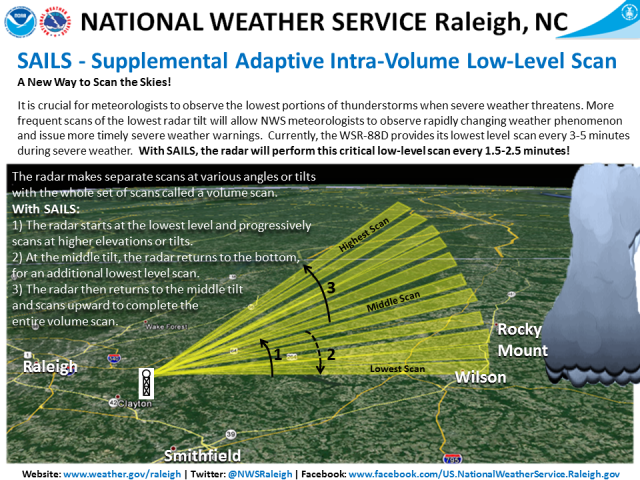A new software upgrade installed at the National Weather Service (NWS) Raleigh Doppler radar (KRAX) today, July 8th, is expected to have a significant impact in severe weather operations. Around two-thirds of all NWS Doppler radars have been upgraded as of today, with the rest likely occurring during the next few months. You can view the current build of each NWS radar here (radar’s with the upgrade have the RPG build listed as “14.1”). The software change will allow the WSR-88D radar to obtain the lowest level radar scan more frequently during severe weather events.
With this upgrade, a new feature called SAILS (Supplemental Adaptive Intra-Volume Low-Level Scan) will enable the radar to insert an additional 0.5 degree scan in the middle of a volume scan (see the illustration below for more details). Currently, the WSR-88D radar completes its lowest scan in 3 to 4.3 minutes (during severe weather), depending on the range of the storms from the radar. With SAILS, the radar can now perform this low-level scan every 1.9 to 2.5 minutes, obtaining a 0.5 degree scan almost twice as frequently as before and providing NWS meteorologists with the ability to observe rapidly changing weather phenomenon more frequently and issue more timely severe weather warnings.
A training presentation was provided to NWS Raleigh partners detailing some of the changes with the build, it can be accessed here. The Warning Decision Training Branch (WDTB) has other training resources that are available online as well – RDA/RPG Build 14.0/RPG Build 14.1 training.

No comments:
Post a Comment